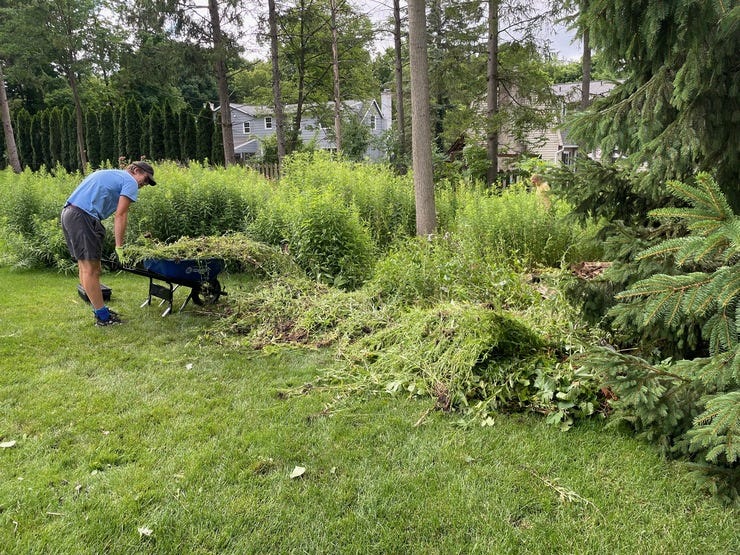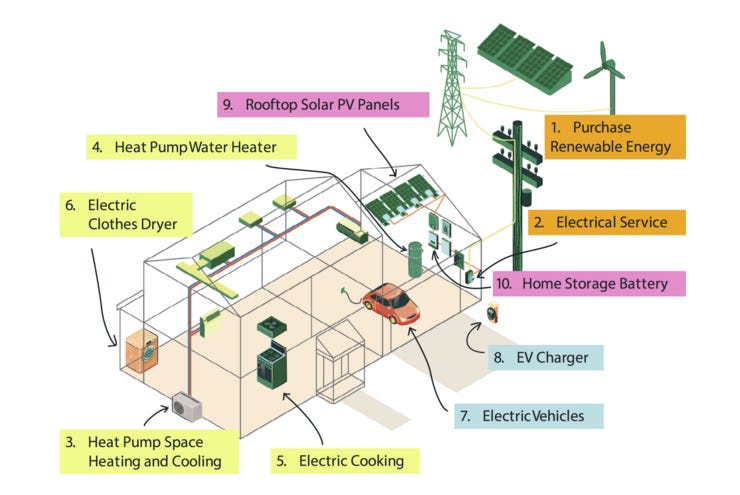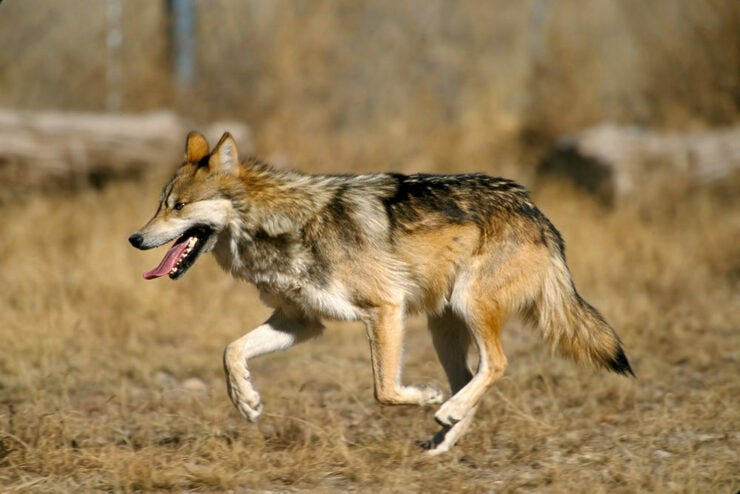Refugia Newsletter #19 by Debra Rienstra: another climate legislation blockage, electrifying your home, bison heroes, and Pitcher's thistle on the dunes
Refugia News
A busy couple weeks for refugia-related activities! I am starting to record Season 3 of the Refugia Podcast. This season will emphasize practical answers to the question: What does the church of refugia actually look like, on the ground? I've already recorded a conversation with Rabbi Dean Shapiro, and next week I'll be interviewing Rev. Jim Antal and 350.org co-founder May Boeve.
Just this week I presented at a lovely online conference hosted by the good people at Hazelnut Farm in Bristol, UK. This was a long-form presentation on Refugia Faith, and you can view the recording here. Hazelnut Farm is a great example of Christians creating a beautiful refugia space both literally through regenerative farming and metaphorically with their community-building partnerships and generosity. Here's their website.
Finally, our backyard refugium is going wild, in a good way. It's year three, and we had to do a little cleaning up of over-enthusiastic willow herb, so I called on the ever-faithful Plaster Creek Stewards to help out. Our intrepid student helpers also filled in bare spots by planting more baby plants: milkweed, grey-headed coneflower, giant yellow hyssop, and others, along with more of my favorite, the fabulously named rattlesnake master.

This Week in Climate News
Well I am sorry to write about another setback after the whole West Virginia v. EPA SCOTUS ruling story last time, but here we go again. No surprise here, but Sen. Joe Manchin, the resident Democratic party pooper, has done it again. Where is he from? Oh yeah, West Virginia, a state long beholden to the coal industry. He's chair of the senate's energy committee, too.
The Democrats need every last vote in the senate right now to get anything done through budget reconciliation, and unfortunately that has given Sen. Manchin power that he has been happy to use to protect the interests of the fossil fuel industry that supplies his personal wealth and props him up as a senator. He has twice now pretended to negotiate, dangled his cooperation before his party compatriots, and then snatched his support away at the last second.
This was the play he used to scuttle the Build Back Better Act seven months ago, and now he has done it again to scuttle the climate-related provisions and the tax increases on the wealthiest individuals and corporations that were part of the Democrat's proposed economic package.
His excuse? His purported sympathy for ordinary Americans struggling with inflation. Let's recall that inflation right now is driven significantly by rising gas prices, and let's also recall that fossil fuel giants raked in record profits in the first quarter of 2022. (Here's a piece by the National Resources Defense Council dispelling some common myths about what is causing higher gas prices right now.)
But Manchin is dismissing urgently needed incentives to move the US toward green energy as merely "politics." Sam Runyon, Manchin's spokesperson, remarked: “Political headlines are of no value to the millions of Americans struggling to afford groceries and gas as inflation soars to 9.1 percent.” None of this reasoning makes any actual logical or economic sense.
Other Democrats are infuriated, as they should be. An article by Burgess Everett in Politico is one of several that quote California Democratic Rep. Huffman's remarks:
“It’s important that every young person, every activist, the majorities of this country who are demanding climate action understand very clearly this is not the Democrats... This is one man named Joe Manchin. When it comes to the most important existential issue of our time, this man is a wrecking ball.”
It is fun to see the Democrats get angry. But this is a huge blow to Biden's presidency and to US credibility abroad on climate work. My hope is that yet another Manchin-blockade makes US voters angry, too. According to a recent Pew Research study, 69% of us want federal climate action to help the US develop renewable energy and reach a carbon neutral goal by 2050.
But once again, we are up against the enormous power of the fossil fuel industry to defend their profits and delay real action on climate with every shenanigan possible. Using their handmaiden in congress is just one of many effective techniques.
Deeper Dive
Meanwhile, those of us willing to push forward the shift to renewables in our own areas of influence might consider some help from the folks at Rewiring America. Here's their website on electrifying your home, complete with a downloadable resource.
This past week I watched their video (below; it's about an hour long), which I found both entertaining and informative. We already have solar panels and an electric vehicle at my house, but this video gives an introduction to heat pumps, electric water heaters, electric induction stoves, and more. Joel Rosenberg also has helpful things to say about planning, prioritizing, modeling for others, and promoting green energy grids in your community to help run all this electric stuff.
Refugia Sighting
For our refugia sighting this time, we're going to go literal and talk about big furry animals. Ecologists continue to fill out our understanding of how large mammals, both predators and their large herbivore prey, work together in balance as "ecosystem engineers." A recent study outlines a strategy for re-introducing just 20 keystone species in certain critical areas around the world in order to bring about fairly rapid ecosystem restoration, which would in turn promote carbon sequestration. In other words, these big mammals can help heal the earth--through refugia work.
This work is already happening, as described in the article below by Janet Marinelli in the Yale Environment 360. Reintroducing to existing fragments of their native habitats creatures such as bison, bears, wolverines (Go Blue!), hippos, cheetahs, marsh deer, white-lipped peccary etc. not only helps conserve many threatened species but also helps heal and expand those habitats.
This article by Jess McHugh in The Washington Post details how this works with bison. Bison actually create "green waves" as they move across grasslands. The particular ways that bison graze, wallow, and walk serve to green up landscapes and support hosts of plants, insects, birds, and other creatures. Indigenous groups are already helping in the caretaking of re-introduced herds in the US.
Of course, there are ongoing challenges here in negotiating safe human-wildlife relations (also wildlife-livestock relations). People are not always smart about dealing with wild creatures, as demonstrated by recent incidents in which people made some dumb moves, prompting unfortunate tourist-bison encounters in Yellowstone National Park. Here's a video mash up if you want to shake your head and wonder what people are thinking.
The Wayback Machine
Who doesn't love a prickly little survivor? The Pitcher's thistle is a species endemic to Michigan dune ecosystems. It needs moving sand to survive. To celebrate high summer in Michigan, here's a little love song to this plant that I wrote in 2018 after a visit to Sleeping Bear National Lakeshore.
Thank you!
Thanks for reading! I keep these newsletters quickly scannable, with opportunities for deeper reading as you are able. I also tend to emphasize the connections between faith communities and climate action.
You can send me a response to this newsletter simply by replying to the email that brought it to you. If you are so inclined, please follow me on Twitter or Facebook @debrakrienstra. You can always contact me on those platforms, too. Also check out my website at debrarienstra.com.
If you like this newsletter, please share with others!





